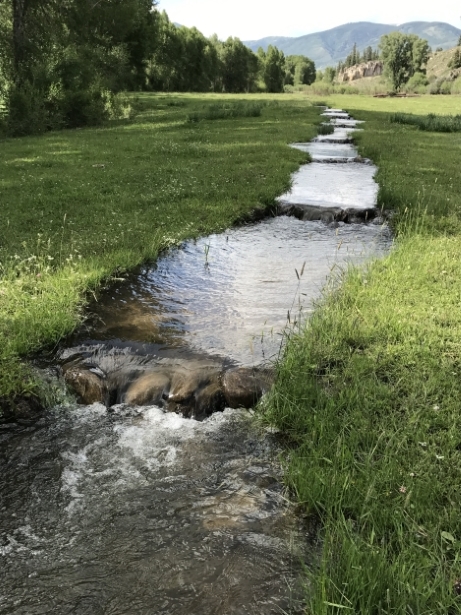Q: What is the Ag Water Network?
A: The Ag Water Network was created by Colorado Cattlemen's Association and Partners for Western Conservation to help keep agricultural water connected with agricultural land. The current system of 'buy and dry' in which cities purchase agricultural water rights and use them to supply water to new housing developments negatively impacts rural economies, the environment and Colorado's food security. A system that enables agricultural producers to continue producing food and fiber while generating consistent revenue through irrigation water leasing helps stabilize farm income and helps keep working farms in business.
Through outreach, education and technical assistance, the Ag Water NetWORK (AWN) helps equip ag water right holders statewide with contextual, in-depth knowledge about their water rights and ag water-related challenges and opportunities in Colorado. The AWN works to raise producer awareness and depth of understanding about agricultural water issues that are relevant to irrigated ag and non-ag water communities. The AWN also helps to increase CCA's overall focus and organizational capacity in addressing irrigated agriculture's needs.
As one Colorado dairy farmer put it, "the best way to prevent buy and dry is to have prosperous farmers." Ag producers continue to deal with rising costs of input and equipment, taxes, insurance and labor – while commodity prices remain stubbornly low – sometimes even below the cost of production. Leasing provides an opportunity for some farmers to monetize a portion of their irrigation water rights – providing a reliable income stream for farmers and water for cities or other water interests.
Q: What are the goals of the Ag Water Network? A: The over-arching goal of the Ag Water NetWORK is to help keep ag water connected with ag land. Within this broad goal there are several individual goals and objectives.
- Provide clear, contextual and actionable information to ag water right holders about water rights, and water-related challenges and opportunities.
- Help raise awareness and understanding among agricultural producers about the watershed management planning process and the potential benefits to the agricultural community.
- Assist in implementing projects involving ag water rights that will fill knowledge gaps related to water leasing arrangements.
- Help facilitate the development of an efficient, cost-effective and flexible water leasing system that ag water right holders will find superior to 'buy and dry.'
- Provide outreach to agricultural producers and ag-affiliated organizations about watershed and stream management planning, and training ag-oriented individuals to help them engage with other water stakeholders on local watershed and stream management planning activities.
- Help quantify and value agricultural ecosystem services and facilitate exchanges of ecosystem services that compensate land owners and benefit the environment.
- Help develop and execute multi-partner, multi-benefit funding strategies for key ag water projects
- Deliver outreach, engagement, community-level discussions, and follow-up around projects.
Q. Why was the Ag Water Network created?
A: In 2010, a Statewide Water Supply Initiative (SWSI) report was released, which estimated Colorado's population could swell to as much as 9.6 million people by 2050, nearly doubling the 2010 population of 5.3 million. The report indicated demand for water driven by the increasing population could result in a municipal and industrial water supply gap of between 310,000 and 560,000 acre-feet.
The SWSI report indicated that as much as 700,000 irrigated acres could be dried-up statewide by 2050 through the purchase and transfer of water rights from irrigated agriculture to urban areas. The projected reduction in irrigated acreage in the South Platte River Basin alone was estimated at 22% of agricultural land under production. Such large-scale dry-up of irrigated agriculture, known as 'buy and dry,' would have far-reaching and irreversible negative impacts on rural economies, the environment, food security, and the landscape aesthetic.
The Ag Water Network was created to increase awareness among ag irrigation water right holders about ag water leasing alternatives, and to help facilitate ag water leasing projects that will be beneficial to both ag water right holders and the lessees of the water.
Q: What is the Colorado Water Plan?
A: One week before Thanksgiving, 2015, the Colorado Water Plan was released by the Colorado Water Conservation Board (CWCB). The Colorado Water Plan emphasized water conservation, increased storage, and alternative agricultural transfer mechanisms (ATMs) as the primary means for closing the projected water gap.
In early 2023, the CWCB released the updated Colorado Water Plan. The updated water plan has four major action areas: Vibrant Communities, Robust Agriculture, Thriving Watersheds and Resilient Planning.
The water plan recognizes the economic, environmental and cultural value of Colorado's agriculture industry. It promotes alternatives to "buy and dry" water transfers, and instead encourages sustainable approaches that enable irrigated land to stay in production while helping supply water for other uses. Rotational fallowing, deficit irrigation, and planting lower consumptive use crops are the main practices being looked at for "creating" consumptive use water that would otherwise have been used by crops. Consumptive use water is water retained by the growing plant plus the amount lost through evapotranspiration.
The 2015 state water plan put forth a goal of 50,000 acre-feet per year to come from alternative ag water transfer mechanisms (ATMs). That quantitative value was not included in the 2023 update.